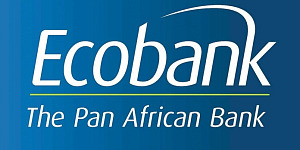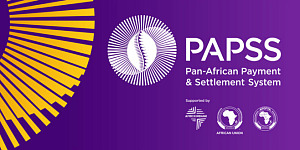Despite positive Gross Domestic Product prospects for most countries in the region, Sub-Saharan Africa stock markets could face another difficult year due to the continued pressure on commodity prices, electricity challenges and the possibility of continued interest rate hikes by the United States, Pan African investment managers, Imara Africa Securities says.
After slowing to 3,4 percent in 2015, economic activity in the region is expected to pick up to 4,2 percent in 2016 and to 4,7 percent in 2017-18 with considerable variations within the region.
However, the World Bank, in its latest outlook for the region, expects SSA to continue to face notable challenges in the short to medium term. It expects commodity prices to stabilise but remain low through to 2017 and electricity challenges to persist.
“Country specific issues, such as the on-going reticence of the authorities in Nigeria to devalue the currency will also weigh on sentiment towards portfolio investment into SSA,” Imara said in its Sub-Saharan Africa Stock Markets 2015 Review and 2016 Outlook.
Most stock exchanges in the region closed 2015 in the red with only two indices, Uganda’s local index and the BRVM Composite, generating a positive return in USD terms.
Imara said these negative returns came against the backdrop of inter alia, the Chinese economic slowdown, lower commodity and oil prices and the onset of monetary tightening in the USA.
“One of the most immediate impacts of the aforementioned factors was that most emerging and developing market currencies came under significant pressure as the dollar strengthened, with SSA being no exception. The impact on single commodity driven economies on the continent such as Angola, Nigeria and Zambia was even more severe, leading to increasing fiscal imbalances and broader macro-economic instability,” Imara said.
The investment managers said Uganda’s LSI put on 6,16 percent while the regional BVRM’s composite index gained 5,76 percent. Zambia, which was hit hard by the poor copper prices was the worst performer after shedding 45,75 percent.
Rwanda’s domestic index shed 42,53 percent, primarily due to the poor performance of Bralirwa while Nigeria shed 23,99 percent.
Although Botswana was affected by the lower diamond prices in 2015, the country still attained moderate overall growth mainly driven by the non-mining sectors including trade and tourism, as well as financial and government services.
Imara said the Domestic Company Index closed 2015 in the green, up 11,58 percent in pula terms. However, the strengthening of the USD against the BWP resulted in the index weakening by 5,28 percent in USD terms compared to the previous year.
15 counters recorded capital gains on their share prices, while 4 recorded losses.
“Market activity across both the foreign and domestic boards closed higher year-on-year. On the DCI, volumes were up 33,91 percent which translated into a 38,10 percent increase in market turnover, with 769.2m shares worth BWP 2,9bn (US$289,2m) trading against 574,4m shares worth BWP 2,1bn (US$228,8m) that transacted in 2014,” said Imara.
Going forward, Imara said the Botswana economy should be more stable in 2016 as the country benefits from the sound macroeconomic buffers built up in past years along with political stability.
On the Botswana Stock Exchange, the investment managers said the new listing of Botswana Telecommunications Corporation Limited (BTCL), currently a state owned body, will facilitate market growth.
They said counters such as Choppies, BIHL and Letshego are in stages of cross-border acquisitions and this pursuit of regional growth should see more investor interest in 2016.
The regional BVRM was among the top-performing SSA stock markets on the consolidation of economic growth in Cote d’Ivoire and throughout the broader West African Economic and Monetary Union (UEMOA) which continued to make the region attractive to investors. The region has benefited from stable inflation and manageable budget deficits in many of its member countries.
The bourse is expected to remain resilient benefitting from the fact that it is priced in XOF which has a direct peg to the euro.
Malawi suffered donor fatigue after the World Bank, European Union and the IMF withdrew support to the government after the infamous ‘cashgate scandal’ in 2014.
Despite a tight monetary policy during the 2015 fiscal year the reserve bank struggled with containing both inflation and exchange rates.
The Malawi Stock Exchange recorded a loss of 2,20 percent compared to a gain of 18,99 percent in kwacha terms in 2014 as sentiment remained predominately bearish during 2015.
Imara said a combination of exogenous factors, among them the El Niño induced drought, flooding in other areas and the absence of donor funding as well as endogenous factors such as a large stock of both domestic and foreign debts will continue to impact the economy negatively.
“After experiencing significant erosion of value during 2015, the Malawi Stock Exchange is forecast to remain depressed in the immediate outlook given that the fundamentals of the economy have not improved, with signs on the ground pointing towards a worsening of the macro environment. Corporate earnings in real terms will be negative in line with a sluggish economy,” Imara said.
For Mauritius, the SEM’s benchmark index, the Semdex, after recording a marginal 1,05 percent year on year decline in local currency terms in 2014, saw an accelerated pace of decline in 2015, shedding 12,67 percent in MUR to close at 1,811.07 points ( -22,91 percent in USD).
The Semdex’s performance in 2016 is expected to be driven mainly by the banks, with the reduction in rates potentially seeing increased economic activity, while tourism stocks should also benefit from higher incoming traffic, at least from a revenue perspective.
Namibia’s economy showed steady growth during 2016 despite significant challenges borne out of weak commodity prices.
Imara noted that the NSX Local index gained 27,99 percent to close at 497,91 points in 2015 in local currency terms but lost 4,71 percent in USD terms.
Of the 8 local listed counters only FNB Holdings recorded a positive USD return during the year at
+21,99 percent, having put on an impressive 63.91 percent in NAD.
The rest of the market struggled to contend with the weaker currency, with the other four shares to have recorded positive gains in NAD all yielding a negative return in USD.
The stock market has been forecast to benefit from increased activity with two new listings having already been recorded, specifically the secondary listing of investment holding company Tadvest Limited on the Main Board of the NSX as well as the secondary listing of Astoria Investments Ltd.
Companies on the Dar es Salaam Stock Exchange had a mixed annual performance in 2015 with 6 counters advancing, 12 declining and three ending the year unchanged.
Tanzania’s economic output is expected to rise at 7,1 percent in 2016 /17 driven in part by rising consumption from consumers, increased infrastructure spend and growing exports.
The DSE is expected to record increased growth driven by a minimum of five new listings of equities and bonds including a planned listing of the Stock exchange itself.
“Demutualisation of the DSE will help to strengthen governance and financial stability since it will be able to raise capital,” said Imara.
The Lusaka Stock Exchange All-Share Index ended 2015 with a 6,91 percent decline in kwacha terms and 45,75 percent in USD terms.
Market capitalisation on the LuSE closed the year at ZMW 64,3bn or US$5,9bn, compared with the 2014 close of ZMW 66,7bn (US$10,5bn).
Market watchers anticipate more listed companies to seek disposal of their shares in order to comply with the LuSE minimum float requirement going forward, which should prove positive for market activity.
2015 was yet another difficult year for the Zimbabwe Stock Exchange equities as the
Industrial Index slumped 29,45 percent to 114,85 points and the Mining index fell by 66,7 percent to end at 23,70 points as all mining counters declined by between 25 percent and 83,3 percent.
Total market capitalisation also fell by 33 percent to US$3,2bn.
Imara expects the performance of the Zimbabwe Stock Exchange in 2016 to depend on the authorities addressing the macroeconomic fundamentals.
The ZSE had its shakiest start to a year ever. Earlier on Tuesday, February 23, the equities market hit its lowest level since April 30, 2009 after dropping 0,59 to settle at 99,80. And it has declined further in the following few trades.
“In our view, the ZSE still carries good long-term growth potential given the economy’s strong growth prospects around the area of mineral endowment, albeit off a low base. Nonetheless, the economy remains hugely undercapitalised with most companies still saddled with heavy and expensive borrowings. We believe that it will be difficult for ZSE stocks to post decent capital appreciation, instead we urge investors to be defensive and also consider dividend yields,” the investment manager said.
It is expected that blue chip stocks will offer defensive qualities that can limit the downward risk of equity portfolios. Some of these recommended stocks include British American Tobacco Zimbabwe, Econet, AFDIS, Innscor, Natfoods, Old Mutual, Padenga and SeedCo.










































